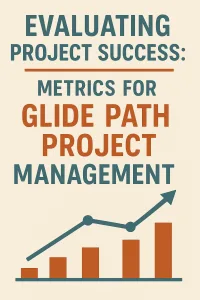Introduction
In the ever-evolving landscape of project management, the emergence of Agile practices has significantly influenced traditional methodologies. Agile is characterized by its iterative approach, emphasizing flexibility, customer collaboration, and rapid delivery of functional software. Core principles of Agile include:
- Customer Satisfaction: Prioritizing customer needs and feedback throughout the project lifecycle.
- Iterative Development: Delivering work in small, manageable increments, allowing for adjustments based on stakeholder input.
- Collaboration: Encouraging teamwork and communication among all project participants, including stakeholders and team members.
In contrast, traditional project management is often defined by its structured approach, focusing on detailed planning, defined scopes, and sequential phases. This methodology typically follows a linear path, where each phase must be completed before moving on to the next. Portfolio management, on the other hand, encompasses a broader scope, aligning multiple projects with the strategic goals of an organization. It involves selecting the right projects to maximize value and ensure resource optimization.
The purpose of this article is to explore the impact of Agile practices on traditional project and portfolio management. By analyzing how Agile methodologies challenge and enhance conventional methods, we aim to provide insights for traditional project managers and Agile coaches alike. This discussion will delve into the key differences between these approaches, the potential benefits of integrating Agile practices, and the implications for project success in a rapidly changing environment.
Understanding Project Management and Portfolio Management
Both project management and portfolio management play crucial roles, yet they serve distinct purposes and operate under different frameworks. Understanding these differences is essential for traditional project managers and agile coaches alike, especially in the context of evolving methodologies like Agile.
Defining Project Management
Project management is primarily concerned with the execution of specific projects. It involves planning, executing, and closing projects while adhering to defined constraints such as scope, time, and budget. The key characteristics of project management include:
- Focus on Deliverables: Project management emphasizes delivering specific outputs or outcomes within a set timeframe and budget. This discipline ensures that projects are completed efficiently and effectively, meeting the expectations of stakeholders [1].
- Methodologies and Tools: Various methodologies, including Waterfall and Agile, can be employed within project management to guide teams in achieving their objectives. Each methodology offers different approaches to planning and execution, allowing project managers to choose the best fit for their project needs [1].
Defining Portfolio Management
In contrast, portfolio management takes a broader view, focusing on the strategic alignment of multiple projects and programs to achieve overarching organizational goals. The essential aspects of portfolio management include:
- Strategic Alignment: Portfolio management ensures that all projects within the portfolio align with the organization’s strategic objectives. This alignment helps prioritize projects based on their potential impact and value to the organization [11].
- Resource Allocation: Effective portfolio management involves the optimal allocation of resources across various projects, ensuring that the organization can maximize its return on investment and achieve its strategic goals [11].
Contributions to Organizational Success
Both project management and portfolio management are integral to an organization’s success, albeit in different ways:
- Project Management’s Role: By delivering projects on time and within budget, project management contributes directly to the operational efficiency of an organization. Successful project execution can lead to improved customer satisfaction and enhanced competitive advantage [11].
- Portfolio Management’s Role: Portfolio management provides a framework for decision-making regarding which projects to pursue, ensuring that resources are allocated to initiatives that align with strategic priorities. This strategic oversight helps organizations adapt to changing market conditions and optimize their project investments [11].
While project management focuses on the successful delivery of individual projects, portfolio management encompasses a broader strategic perspective, ensuring that all projects contribute to the organization’s long-term goals. Understanding these distinctions is vital for traditional project managers and agile coaches as they navigate the complexities of modern project environments, particularly in light of agile practices that may influence both disciplines.
Overview of Agile Practices
Agile methodologies have significantly transformed the landscape of project and portfolio management, offering a fresh perspective that contrasts sharply with traditional approaches. This section delves into the core principles of Agile, popular frameworks, and the ongoing shift from conventional methods to Agile practices in project execution.
Agile Principles
At the heart of Agile practices are several key principles that guide teams in their approach to project management:
- Flexibility: Agile emphasizes the ability to adapt to changing requirements and environments. This flexibility allows teams to respond quickly to feedback and evolving project needs, ensuring that the final product aligns closely with customer expectations [6].
- Iterative Development: Agile promotes an iterative approach, where projects are broken down into smaller, manageable increments. This allows for continuous improvement and refinement of the product through regular feedback loops, enhancing overall quality and responsiveness [12].
- Customer Collaboration: Agile methodologies prioritize collaboration with customers throughout the project lifecycle. By involving stakeholders in the development process, teams can ensure that the end product meets user needs and expectations, fostering a sense of ownership and satisfaction [12].
Popular Agile Frameworks
Several frameworks embody Agile principles, each offering unique methodologies and practices:
- Scrum: This framework focuses on delivering work in short cycles called sprints, typically lasting two to four weeks. Scrum emphasizes roles such as the Scrum Master and Product Owner, facilitating collaboration and accountability within the team [14].
- Kanban: Kanban is a visual management tool that helps teams manage workflow and optimize efficiency. By visualizing tasks on a board, teams can identify bottlenecks and streamline processes, promoting continuous delivery [14].
- Lean: Lean principles aim to maximize value while minimizing waste. This approach encourages teams to focus on delivering only what is necessary, thereby enhancing efficiency and effectiveness in project execution [14].
The Shift from Traditional to Agile
The transition from traditional project management to Agile practices represents a significant cultural shift within organizations. Traditional methods often rely on rigid planning and sequential phases, which can hinder responsiveness to change. In contrast, Agile methodologies embrace uncertainty and encourage teams to iterate and adapt as they progress.
- Enhanced Responsiveness: Agile practices allow teams to pivot quickly in response to feedback or changing market conditions, which is increasingly vital in today’s fast-paced business environment [10].
- Improved Collaboration: The emphasis on customer collaboration and team communication fosters a more inclusive environment, leading to better alignment between project goals and stakeholder expectations [12].
- Focus on Value Delivery: Agile methodologies prioritize delivering value to customers early and often, contrasting with traditional methods that may delay value realization until project completion [10].
Agile practices offer a dynamic alternative to traditional project and portfolio management, emphasizing flexibility, iterative development, and customer collaboration. As organizations continue to embrace these methodologies, understanding their principles and frameworks becomes essential for both traditional project managers and Agile coaches alike.
The Clash of Paradigms: Agile vs. Traditional Approaches
The emergence of Agile methodologies has sparked a significant shift in how projects are planned and executed. This section delves into the fundamental differences between Agile and traditional project and portfolio management, highlighting the contrasting approaches, adaptability, and decision-making processes inherent in each.
Iterative vs. Linear Methodologies
One of the most striking differences between Agile and traditional project management lies in their approach to project execution. Agile methodologies are characterized by their iterative and incremental nature, allowing teams to deliver requirements in small, manageable segments. This flexibility enables teams to adapt to changing requirements and customer feedback throughout the project lifecycle, fostering a more responsive development environment [7][9].
In contrast, traditional project management often adheres to a linear methodology, commonly known as the Waterfall approach. This method divides projects into distinct phases that must be completed sequentially, making it challenging to accommodate changes once the project is underway. The rigidity of this approach can lead to difficulties in responding to evolving project needs, ultimately impacting customer satisfaction and project outcomes [3][6].
Rigidity vs. Adaptability
Traditional project management is often criticized for its rigidity. The structured phases and predefined processes can create a bureaucratic environment that stifles innovation and responsiveness. This rigidity can be particularly detrimental in fast-paced industries where market conditions and customer preferences can shift rapidly [1][11].
On the other hand, Agile practices emphasize adaptability. Agile frameworks encourage teams to embrace change, allowing for continuous improvement and experimentation. This adaptability not only enhances the team’s ability to meet customer needs but also fosters a culture of collaboration and innovation, which is essential in today’s dynamic business landscape [2][8].
Decision-Making Processes
The decision-making processes in Agile and traditional project management also differ significantly. In traditional settings, decision-making is often centralized, with project managers making key decisions based on predefined plans and schedules. This can lead to delays in responding to issues or changes, as decisions may require multiple layers of approval [15].
Conversely, Agile methodologies promote decentralized decision-making, empowering team members to make decisions collaboratively. This approach not only accelerates the decision-making process but also encourages ownership and accountability among team members. Agile teams rely on data-backed decisions and prioritize value streams, which allows for quicker adjustments to project direction based on real-time feedback [5][9].
Conclusion
The clash between Agile and traditional project management paradigms highlights the need for project managers to understand the strengths and limitations of each approach. While traditional methods offer structure and predictability, Agile practices provide the flexibility and adaptability necessary to thrive in an ever-changing environment. By recognizing these differences, project managers and Agile coaches can better navigate the complexities of modern project management, ultimately leading to more successful project outcomes.
Impact of Agile Practices on Traditional Project Management
The integration of Agile practices into traditional project management methodologies has become a significant trend in recent years. This shift is driven by the need for greater flexibility, faster delivery, and improved collaboration in project execution. Here, we will explore how Agile influences traditional project management, supported by case studies and an examination of the challenges faced by traditional project managers in adopting these new methodologies.
Integration of Agile Techniques in Traditional Project Management
- Flexibility and Adaptability: Agile methodologies emphasize adaptability, allowing teams to respond quickly to changes in project requirements. This flexibility contrasts with the rigid structures often found in traditional project management, which can hinder responsiveness to evolving project needs [4][6]. By incorporating Agile techniques, traditional project managers can enhance their ability to pivot and adjust project plans as necessary.
- Collaboration and Feedback: Agile practices prioritize team collaboration and continuous feedback from stakeholders. This approach fosters a more inclusive environment where team members can contribute ideas and insights, leading to improved project outcomes. Traditional project management, which often relies on hierarchical decision-making, can benefit from this collaborative spirit by integrating Agile practices that encourage open communication and iterative feedback loops [5][9].
Case Studies Highlighting Agile’s Impact
- Improved Project Outcomes: Numerous case studies illustrate the positive effects of Agile practices on project outcomes. For instance, organizations that adopted Agile methodologies reported increased customer satisfaction due to faster delivery times and higher-quality products. These improvements stem from Agile’s focus on delivering small, incremental pieces of work, allowing for regular assessment and adjustments based on stakeholder feedback [3][13].
- Successful Transformations: Companies that have successfully integrated Agile into their traditional project management frameworks often cite enhanced team morale and productivity. For example, a technology firm that transitioned to Agile reported a 30% increase in project delivery speed and a significant reduction in time spent on planning, allowing teams to focus more on execution and less on extensive documentation [7][11].
Challenges for Traditional Project Managers
- Cultural Resistance: One of the primary challenges traditional project managers face when adopting Agile is cultural resistance within their organizations. Many teams are accustomed to established processes and may be hesitant to embrace the changes that Agile requires, such as increased collaboration and less emphasis on detailed upfront planning [8][15]. Overcoming this resistance necessitates strong leadership and a commitment to fostering a culture that values flexibility and innovation.
- Skill Gaps: Traditional project managers may also encounter skill gaps when transitioning to Agile methodologies. The shift requires a different mindset and skill set, including proficiency in Agile frameworks, facilitation techniques, and an understanding of iterative development processes. Training and support are essential to equip project managers with the necessary tools to navigate this transition successfully [2][12].
The impact of Agile practices on traditional project management is profound, offering opportunities for enhanced flexibility, collaboration, and improved project outcomes. However, traditional project managers must navigate cultural resistance and skill gaps to fully leverage the benefits of Agile methodologies. By embracing these changes, they can position themselves and their teams for greater success in an increasingly dynamic project landscape.
Impact of Agile Practices on Portfolio Management
The integration of Agile practices into portfolio management has significantly transformed how organizations approach project selection, prioritization, and execution. This section delves into the effects of Agile methodologies on traditional portfolio management strategies, particularly focusing on responsiveness to change, project prioritization, and the balance between strategic alignment and Agile flexibility.
Enhancing Responsiveness to Change
Agile practices inherently promote adaptability, allowing portfolio management to respond more effectively to changing market conditions and stakeholder needs. Traditional portfolio management often relies on rigid planning and forecasting, which can hinder responsiveness. In contrast, Agile portfolio management encourages:
- Continuous Feedback Loops: Agile methodologies emphasize regular feedback from stakeholders, enabling teams to adjust priorities and strategies in real-time. This responsiveness is crucial in dynamic environments where project requirements may evolve rapidly [5].
- Decentralized Decision-Making: Agile practices often empower teams to make decisions at various levels, allowing for quicker adjustments to project scopes and priorities. This decentralization can lead to more informed and timely responses to emerging challenges and opportunities within the portfolio [4].
Role of Agile Portfolio Management in Prioritizing Projects
Agile portfolio management shifts the focus from a purely top-down approach to a more collaborative and iterative process for project prioritization. Key aspects include:
- Value-Driven Prioritization: Agile methodologies prioritize projects based on their potential value delivery rather than solely on strategic alignment. This approach ensures that the most impactful projects receive attention and resources, aligning with Agile’s core principle of delivering value to customers [9].
- Dynamic Roadmapping: Agile roadmapping serves as a flexible tool for visualizing project progress and adjusting priorities as needed. This dynamic approach allows organizations to pivot quickly in response to new information or changing business conditions [8].
Balancing Strategic Alignment and Agile Flexibility
While Agile practices enhance flexibility, maintaining strategic alignment remains a critical challenge for portfolio management. Organizations must find a balance between these two aspects to ensure long-term success:
- Governance Structures: Establishing a governance framework that supports Agile practices while ensuring alignment with organizational strategy is essential. This structure should facilitate communication and collaboration across teams, enabling them to align their Agile initiatives with broader business goals [5].
- Prioritization Frameworks: Implementing frameworks that incorporate both Agile flexibility and strategic objectives can help organizations navigate the tension between these two priorities. By using metrics that reflect both immediate value delivery and long-term strategic goals, organizations can make informed decisions about project prioritization [6].
The impact of Agile practices on portfolio management is profound, offering enhanced responsiveness, improved project prioritization, and a necessary balance between flexibility and strategic alignment. As traditional project managers and Agile coaches navigate this evolving landscape, understanding these dynamics will be crucial for driving successful outcomes in their organizations.
Best Practices for Integrating Agile into Traditional Frameworks
The integration of Agile practices into traditional project and portfolio management frameworks can significantly enhance flexibility, responsiveness, and overall project success. Here are some actionable insights for project managers and Agile coaches looking to facilitate this transition effectively:
Steps for Transitioning to Agile Methodologies
- Assess Current Processes: Begin by evaluating existing project management processes to identify areas where Agile principles can be applied. This includes understanding the strengths and weaknesses of current methodologies and recognizing opportunities for improvement [1].
- Define Clear Objectives: Establish specific goals for the transition to Agile. This could involve improving team collaboration, increasing project delivery speed, or enhancing customer satisfaction. Clear objectives will guide the integration process and help measure success [1].
- Pilot Agile Practices: Start with a pilot project to test Agile methodologies in a controlled environment. This allows teams to experiment with Agile practices, gather feedback, and make necessary adjustments before a full-scale rollout [1].
- Iterate and Adapt: Embrace the Agile principle of continuous improvement. Regularly review the integration process, gather insights from team members, and be willing to adapt practices based on what works best in the traditional context [1].
Training and Cultural Shifts
- Invest in Training: Provide comprehensive training for team members on Agile principles and practices. This includes workshops, certifications, and hands-on sessions that cover frameworks like Scrum, Kanban, and Lean [2].
- Foster a Culture of Collaboration: Shift the organizational culture to prioritize collaboration, transparency, and open communication. Encourage teams to share knowledge and experiences, which is essential for Agile success [2].
- Leadership Support: Ensure that leadership is on board with the transition. Leaders should model Agile behaviors and support teams in adopting new practices, which can help mitigate resistance to change [2].
- Encourage Feedback Loops: Create mechanisms for regular feedback from team members and stakeholders. This helps in identifying challenges early and allows for timely adjustments to the Agile integration process [2].
Tools and Frameworks for Facilitation
- Agile Project Management Tools: Utilize tools like Jira, Trello, or Asana that support Agile methodologies. These platforms facilitate task management, collaboration, and tracking progress in real-time, making it easier to implement Agile practices within traditional frameworks [3].
- Hybrid Frameworks: Consider adopting hybrid frameworks that combine Agile and traditional project management practices. This approach allows teams to leverage the strengths of both methodologies, providing flexibility while maintaining structure [3].
- Portfolio Management Software: Implement portfolio management tools that support Agile practices, enabling teams to assess project performance against defined criteria and optimize resource allocation effectively [3].
- Continuous Monitoring Tools: Use tools that facilitate ongoing monitoring and reporting of project progress. This ensures that teams can quickly adapt to changes and maintain alignment with Agile principles [3].
By following these best practices, project managers and Agile coaches can effectively integrate Agile methodologies into traditional project and portfolio management frameworks, leading to improved project outcomes and a more responsive organizational culture.
Future Trends: The Evolution of Project and Portfolio Management
As organizations increasingly adopt Agile methodologies, the landscape of project and portfolio management is undergoing significant transformation. This section explores the potential for hybrid models, the impact of digital transformation, and the evolving roles of project and portfolio managers in this new environment.
Hybrid Models: A Blend of Agile and Traditional Approaches
The future of project and portfolio management is likely to see a rise in hybrid management approaches. Many organizations are already experiencing the coexistence of multiple management models, such as Agile, Waterfall, and Scaled Agile methodologies. This hybridization allows teams to leverage the strengths of both Agile and traditional methods, adapting their approach based on the specific needs of projects or programs. For instance, while Agile may be more effective for projects requiring flexibility and rapid iteration, traditional methods may still be necessary for projects with fixed requirements and timelines. This adaptability is crucial as organizations strive for Agile maturity, balancing scalability and flexibility with established practices [1][8].
Digital Transformation: Shaping Project Management
Digital transformation is another key trend influencing project management. The integration of advanced technologies, such as artificial intelligence (AI) and cloud computing, is reshaping how projects are planned, executed, and monitored. These technologies enable more efficient data analysis, improved communication, and enhanced collaboration among project teams. As a result, project managers will need to become proficient in utilizing these tools to drive project success. Furthermore, the shift towards virtual project teams necessitates a greater emphasis on digital communication and collaboration platforms, which can enhance team dynamics and project outcomes [4][7].
Evolving Roles of Project and Portfolio Managers
As Agile practices become more prevalent, the roles of project and portfolio managers are expected to evolve significantly. Traditional project managers may need to adopt a more facilitative role, focusing on enabling teams to self-organize and collaborate effectively. This shift requires a deeper understanding of Agile principles and practices, as well as the ability to foster a culture of continuous improvement and adaptability within teams. Similarly, portfolio managers will need to align their strategies with Agile principles, emphasizing iterative progress and continuous alignment with business goals. This evolution will necessitate a more strategic approach to portfolio management, where the focus shifts from merely managing projects to optimizing the overall value delivered by the portfolio [2][12].
In conclusion, the integration of Agile practices into project and portfolio management is set to redefine traditional methodologies. By embracing hybrid models, leveraging digital transformation, and adapting to the evolving roles of managers, organizations can position themselves for success in an increasingly dynamic and complex project landscape. The future will require a blend of flexibility, strategic thinking, and technological proficiency to navigate the challenges and opportunities that lie ahead.
Conclusion
The integration of Agile practices into traditional project and portfolio management has proven to be transformative, reshaping how projects are planned, executed, and delivered. Agile methodologies emphasize flexibility, collaboration, and customer-centric outcomes, which stand in contrast to the rigid structures often associated with conventional project management approaches. This shift not only enhances project efficiency but also fosters a culture of continuous improvement and responsiveness to change, which is essential in today’s fast-paced business environment.
Key insights from the analysis of Agile’s impact include:
- Enhanced Flexibility and Responsiveness: Agile allows teams to adapt to changing requirements and market conditions more effectively than traditional methods, which often rely on fixed plans and timelines. This adaptability can lead to improved project outcomes and higher customer satisfaction [8].
- Improved Collaboration: Agile practices promote teamwork and communication, breaking down silos that can hinder project success. By fostering a collaborative environment, organizations can leverage diverse perspectives and expertise, leading to more innovative solutions [4][8].
- Iterative Delivery: The iterative nature of Agile enables teams to deliver project components incrementally, allowing for early feedback and adjustments. This approach not only mitigates risks but also ensures that the final product aligns closely with stakeholder expectations [13].
As traditional project managers and Agile coaches reflect on these insights, it is crucial to assess current practices in light of Agile principles. Organizations that embrace Agile methodologies can enhance their project management capabilities, leading to better alignment with customer needs and improved overall success [8][15].
For those interested in further exploring Agile practices, a wealth of resources is available, including:
- Books and Articles: Numerous publications delve into Agile methodologies, offering insights into best practices and case studies.
- Online Courses and Workshops: Many platforms provide training on Agile principles, tools, and techniques, catering to both beginners and experienced practitioners.
- Professional Communities: Engaging with Agile communities can provide valuable networking opportunities and access to shared knowledge and experiences.
The impact of Agile on traditional project and portfolio management is profound and warrants careful consideration. By embracing Agile practices, organizations can not only improve their project outcomes but also foster a culture of innovation and adaptability that is essential for long-term success.
Find out more about Shaun Stoltz https://www.shaunstoltz.com/about/.
This post was written by an AI and reviewed/edited by a human.



